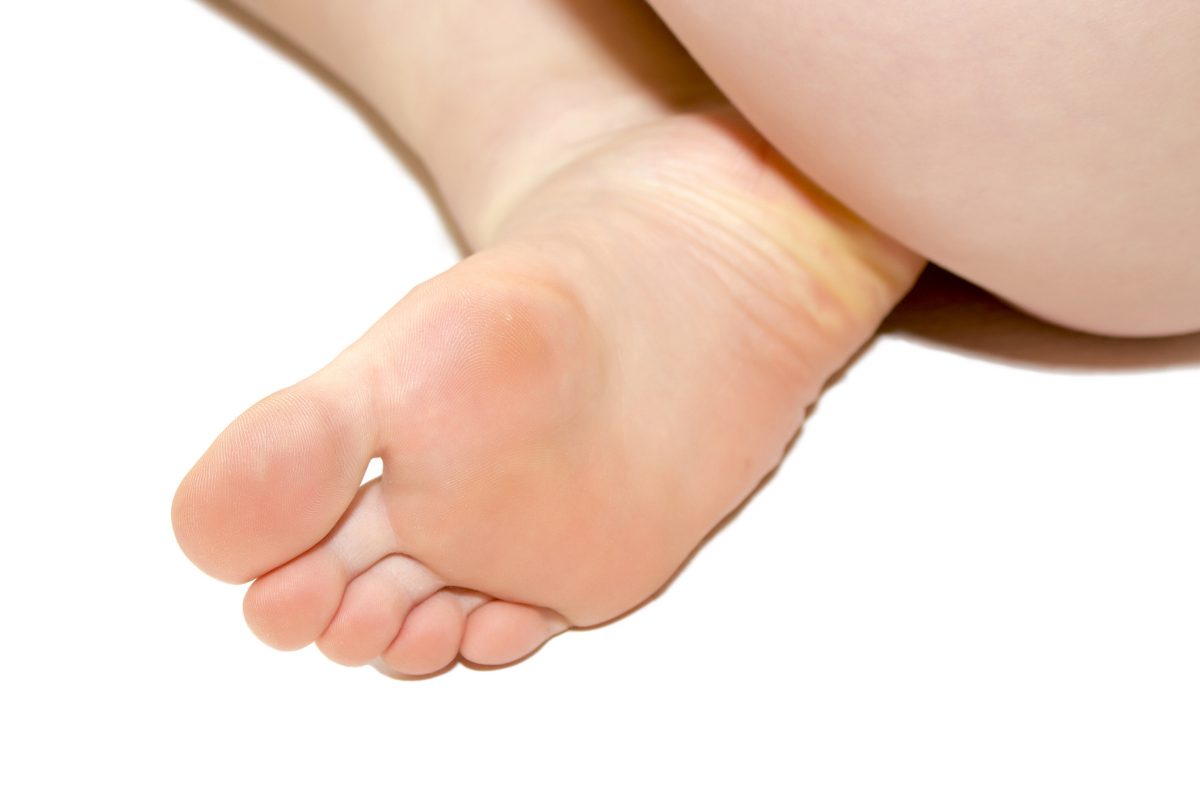
In one of our earlier articles, we discussed what pronation of the foot is and when this natural movement of the foot can turn into a problem. Now we will focus, so to speak, on the movement in the other direction, namely supination of the foot. We will answer such questions as:
- what are the types of supination?
- when do foot supination disorders develop?
- is excessive supination of the foot dangerous?
And if you are also interested in other conditions, be sure to check out our articles dedicated to various foot deformities.
- Flat feet,
- Bunion foot,
- Hammer toes,
- Hallux valgus,
Supination and pronation – the natural movement of the foot
Supination of the foot is a movement that involves turning the foot outward and lifting its inner edge. When the foot is supinated, the longitudinal arch of the foot is elevated, causing the foot to turn outward and reducing contact between the foot and the ground. This movement is often performed when running or jumping, as it helps stabilize the foot and reduces the risk of injury. Unfortunately, excessive use of foot supination can increase the risk of injury.
Pronation, otherwise known as internal rotation, is a term often used in the context of running, especially in reference to pronation of the foot. However, it is worth noting that the concept of pronation applies not only to the foot, but also to other parts of the body, such as the forearm. Pronation is a completely natural and inherent process for our body.
The problem arises when supination of the foot becomes excessively pronated.
Types of supination
Depending on the joint in which the movement occurs, there are several variations of supination. Examples include foot supination (otherwise known as heel supination), forearm supination (that is, supination at the elbow joint) and wrist supination (although the term “supination” is used here in a colloquial context, as it does not occur at the wrist joint itself).
The term “supination” is most often used and discussed in the context of the feet. It refers to the way the foot makes contact with the ground. We can describe it as tilting the ankle outward while rolling the foot from heel to toe. Supination and pronation of the foot occur when the body weight is transferred from the heel to the toes. Muscles such as the posterior tibialis muscle, anterior tibialis muscle, gastrocnemius muscle, plantar fascia, toe flexor and long toe flexor, soleus muscle and long toe extensor muscle have an influence on foot supination.
The phenomenon of pronation and supination can also affect the upper extremities, especially the elbow and forearm. In the case of this part of the body, supination means outward rotation, that is, the transformation of the bones of the forearm from a torsional position to parallel to each other. Pronation, on the other hand, is the opposite movement, that is, inward rotation relative to the long axis of the arm. The lateral muscles of the forearm, such as the brachioradialis muscle, the radial extensors of the wrist and the inversus muscle, are responsible for these movements.
When excessive supination of the foot occurs
Supination in the normal range of motion is a natural process and does not indicate any pathology. The problem arises when supination is excessive, that is, the deviation of the foot significantly exceeds the norm. Persistent positioning of different parts of the body in supination can lead to disorders of the musculoskeletal system. For example, excessive foot deviation in supination can translate into excessive stress on the joint, joint area and tendons, as well as reduced muscle flexibility.
Individuals with a high instep of the foot are more prone to supination, and muscles such as the gastrocnemius muscle, the plantar fascia, the tibialis posterior, the tibialis anterior, the toe flexor, the toe flexor longus, the soleus muscle and the extensor longus muscle are responsible for this movement. Excessive deviation of the foot in supination may be genetic or the result of wearing shoes that are too tight and stiff.
In excessive cases of supination, especially in people who walk a lot, run amateur or professionally, frequent foot pain, rapid fatigue, ankle injuries, Achilles tendonitis, increased risk of ankle sprains and possible muscle strain and inflammation of the plantar fascia can occur. You can recognize excessive supination by the condition of the shoes, where the sole is visibly worn at the outer edge.
Treatment of excessive supination of the feet
Proper exercise and the selection of appropriate footwear or orthotic insoles can help correct misalignment of the foot. Before purchasing, it is worthwhile to consult a professional, such as a podiatrist, orthopedist or physiotherapist, to conduct a professional evaluation of the condition of the feet. Using modern tools, the specialist can accurately assess the patient’s gait biomechanics. It will also be useful to bring to the appointment the shoes you wear most often, especially those used for training. The condition of these shoes can provide clues about how to take steps and possible supination problems.
After an examination and medical history, the specialist may recommend a set of exercises. They will help strengthen the relevant muscle groups responsible for improving gait mechanics. In addition, custom orthotic inserts may also be tailored. Pronating orthotic insoles are recommended for patients who tend to have a staggered foot position. With these orthotics, pressure can be reduced on specific areas of the foot where excessive strain occurs, while improving support in areas where footwork is insufficient. Customized orthotic insoles help maintain proper foot alignment during gait. This can reduce the risk of pain, inflammation and increase safety during physical activity. People with excessively supinated feet may also benefit from soft walking or running surfaces, such as on grass or sand, to reduce pressure on their feet.
Excessive supination versus footwear selection
In the case of pronation as we described in an earlier article, specialists recommend shoes with an insole on the inside of the foot. What does it look like if you suffer from supination above normal?
In this case, neutral shoes, that is, without special inserts, are most often recommended. According to some, shoes with good cushioning and an upper will be best for a supinating foot. Here again, beware of the pitfall of adapting shoes to the problem, rather than solving the problem itself. It is important to secure the ankle firmly, which prevents ankle sprain, among other things.
Minimalist footwear – will it help with excessive pronation and supination?
Well-chosen minimalist shoes can be a great solution for a person who is affected by the problem of excessive supination. Why?
- Zero drop, that is, the lack of a conquered sole allows to induce a natural movement of the foot, so that it is strengthened and “exercises” all the time. We recommend in case of major foot problems to consult a specialist in advance.
- Are wide in the toes, so that the foot has better stability (more widely distributed just toes). As a result, it is less prone to twisting to one side or the other.
- They mimic barefoot walking, and as we mentioned in the earlier paragraph, this is an excellent way to , “home” treatment of excessive supination.
In our store you will find women’s, men’s and children’s minimalist shoes that will protect your foot while giving it full freedom.

Leave a Reply